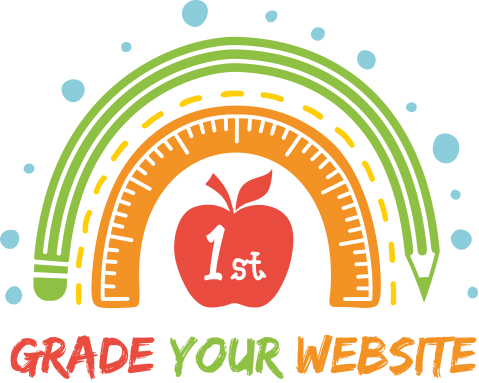Are you wondering why your website analytics are important for your business growth? If you aren't, you should be! It's a lot more complicated than knowing how many people are visiting your site. Visitor statistics are only a small piece of the web-analytics puzzle. It's important to understand what people are actually doing on your site, why they are doing it, and how you can better convert them.
It's important as a business owner not just to look at the most visible aspect of marketing - in this case creating good content for your site - but also to consider less tangible elements that may have an indirect impact on your business like the less visible aspect report which helps us see the bigger picture. For example, where do people who visit your site come from? Are they coming from Google? Facebook? Or perhaps they're referred by friends or family members who've read something interesting on your blog - any data related to behavioral patterns of visitors can help you follow online trends even better than before that's very useful when it comes to understanding what kind of content will influence visitors most or what age groups might be interested in certain products.
In this web analytics blog, you will be able to gain the critical insights needed to better understand how your website visitors are engaging with your site. We'll talk about some of the data found in your web analytics dashboard, and we'll shed some light on what the particular information means for the audience.
What is my core buyer group?
According to ComScore, the average person in the US spends 87 hours monthly on their mobile device. This is more than they spend watching TV (50 hours), and almost as much as they spend sleeping (eight hours).
B2B buying decisions can occur in multiple mediums. The majority of buyer personas within a B2B environment are likely visiting your website during work hours at their desk, rather than on their smartphone over the weekend. It is important to have websites optimised for both desktop and mobile viewing for B2B customers.
Once you have found your core buyer group, continue to test new channels and invest in the ones that perform best. If a channel underperforms, reconsider if this is a valuable place to focus your organic marketing efforts at this time by checking how you got there. If there has been no outreach to push traffic into this channel, is it possible that it's not relevant for your buyer persona? For example, if you are selling cameras, maybe mobile users aren't potential buyers because they are more likely to be traveling or shopping on the go – which may preclude them from making big purchases!
Still, do not neglect the mobile users…
It's easy to spot a trend during a web analytics session: users using the mobile web to browse your site are few and far between.
It's important to understand your audience and their behavior. This helps you determine whether there is a low percentage of mobile users because your site is not mobile-friendly or if there are other reasons.
The thing is if you have this problem and your site is part of your marketing strategy, you're missing out on a huge opportunity! Many brands have considered the problem of mobile site abandonment and come out with solutions, including focusing on the user experience, creating a responsive site, and others.
How well does my mobile experience perform?
When your website metrics show that mobile traffic is low compared to desktop or console traffic, it's time to investigate. What can you do to ensure your mobile users are not negatively impacted by their browsing experience with your site? Is there a specific menu that isn't working properly on phones? All these questions must be answered so you can adjust accordingly and keep the engagement of your site growing appropriately.
Use Website Grader to quickly test the speed of your website and find out how quickly it loads on mobile. Now imagine you are a first-time visitor from a mobile device, where everything runs much more slowly, including navigation, load times, and reading text.
When it comes to different demographics of users think about what their unique perspective might be when using this type of device? Imagine you're surfing on a slow connection with some pretty bad download speeds. Are your images too big? Does it seem like there's an excessive amount of information being displayed all at once? By reviewing some tips on speeding up your site or getting a professional site audit done by someone who is trained in Google Analytics you'll have a better feel for whether or not a mobile experience is useful to your customers.
What country is my traffic coming from?
An important widget to look at in your web analytics dashboard is the Sessions By Country widget. Here you'll see where your traffic is coming from. This view can be especially helpful if you're a global company or aspiring to expand your business internationally. Let's take a deeper look at this widget. Under the date range, set it to a certain time frame. If you're looking further back you can adjust the time range down and if you're looking at a recent time frame you can adjust it up. When you've found your view, click on any of the countries listed to see where your traffic is coming from and analyse the sources. This can be especially helpful if you're trying to get international exposure.
Traffic analysis is a very broad topic and can affect any website regardless of what it may be promoting. Knowing your global audience helps businesses to assess who will most likely visit its doors, so they can make decisions on what to do with its branding or material. This kind of traffic data helps make changes that relate to marketing practices via blogging, social media, or other forms of outreach. If a company isn't reaching out to all international markets, this is considered an untapped potential as it could lead to significant amounts of sales being lost!
How do new and returning users interact with my website?
Web Analytics lets you know the number of ‘sessions’ on your website. This measure reveals how many of your users are browsing the site for the first time only. You can see how many people are new to your domain and whether they go away or stick around to browse more again in a day or so. Meanwhile, this metric shows exactly how much of your traffic is one-time only visitors. While it can be seen that traffic will ebb some days and flow others, downward trends may be signs that visitors aren't sticking with their discovery about what you offer because their needs aren’t being met by whatever the message was that reached them. When something goes wrong, those users might not return as you wanted them to!
However, don't get too caught up in the bounce rate percentage. Additional engagement metrics are tracking how your site visitors are interacting with your content that you can also track with Google Analytics as long as you set them up correctly. A quick refresher: The bounce rate percentage is represented by the share number of visits that visit only one page divided by the total number of visits to that page.
What are my engagement metrics telling me about my audience?
So your bounce rates are high? Don't panic just yet but don't brush off the information either. Notice that it's the aggregate for your entire website over the past month, so if you have a few landing pages with a high bounce rate, that doesn't mean you need to take action quite yet. However, it is probably best to take a closer look at these landing pages by testing out new messaging and UI changes with A/B testing.
Avinash Kaushik (Google) estimates that the average range for this metric is 41-55%. An optimal range is between 26-40%, which means that if you regularly find yourself above or below this threshold when evaluating your online presence, now would be a good time to analyse your content and make sure what you're providing on each page of your website is topically relevant to your target audience - otherwise, chances are they'll waste no time leaving!
If you notice your website visitors aren't staying very long and are not engaging with your content, it's a red flag that something isn't right. One of the first things that you can do to get closer to the root of the problem is by taking a look at the average time spent on your site or how many pages visitors view throughout their visit. Bouncing around between browser tabs or closing windows without clicking on anything bizarre might just mean there was no point in sticking around. You'll want to investigate what seems confusing for users, which could come down to content not aligning with their expectations (sometimes they want more, sometimes less!), so analysing engagement by visitor source is a smart way to go about it.
How is my website doing via social media presence?
An easy way to tell how your website is doing is via its social media presence, especially when it comes to driving traffic back to the site. According to data pulled from Google Analytics, most visitors stick around on the site for an average of less than a minute. This means that either they don't find what they're looking for or don't find the content particularly interesting. Also worth mentioning is that the majority of those coming through social media spend even less time on the site than those arriving via email marketing campaigns and paid search results. It just goes to show you how impressionable you can be concerning what you experience on social media and where you end up clicking your mouse cursor next.
Lastly,
The most important part of your website is your audience. Without them, your site is just a bunch of code and files. So, if you are not tracking your visitors, you are risking your business. It is important to track the numbers because it provides you with a better understanding of your audience. If you see a number dropping, it tells you what you need to improve. The stats can also show you what is working, so you can keep doing it. You don't want to spend your time and money on something that is not working.
We hope that you've been able to use the information we've provided in this article to make changes to your website. We hope you've been able to find some new insights into what your website analytics say about your audience.




